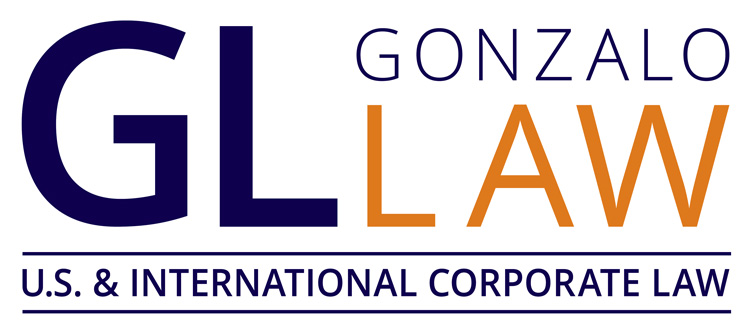
By Atty. Nouvelle L. Gonzalo, Esq.
Chair, Florida Bar International Law Section Committee (ILS) on US-Canada Cross-Border Deals.
Introduction
In the United States, Canada and Mexico are more than our northern and southern neighbors. They are our top two trading partners and export markets.1 One-third of all U.S. exports this year have gone to Canada and Mexico.2 Almost thirty years ago, the U.S., Mexico, and Canada created the largest free trade region in the world with the landmark North American Free Trade Agreement (NAFTA).3 The objectives of the agreement were to eliminate trade barriers, promote fair competition, and increase investment opportunities among the three countries.4 Its big-picture goals were to generate robust economic growth and improve the standard of living for people in the member countries. Economists mostly agreed that NAFTA benefited the economies of North America.5 NAFTA, however, had some unanticipated results. Some argued that it disrupted U.S. industries by moving production jobs to Mexico and frequently putting U.S. workers in a position to accept lower wages and benefits. Mexico criticized the exploitation of Mexican workers. Some even criticized NAFTA as the worst trade deal ever signed by the U.S., so law makers negotiated a new one.

The new trade deal, the United States-Mexico-Canada Agreement (USMCA), went into effect in July of 2021. It addresses both the criticisms of NAFTA and the rapid technological change that has occurred over the past quarter-century. For example, the USMCA modernizes the trade agreement for the digital era by including a chapter on digital trade that was not in the original NAFTA. It grants new intellectual property protection for internet companies and eBooks, technologies that were in their infancy when NAFTA was drafted in the early 1990s. The USMCA is also the first trade agreement to recognize Small and Medium Enterprises (SMEs), which will now be able to benefit from nontariff barriers to trade. To increase the standard of living among people who live in the member countries, the new USMCA creates a more level playing field for workers by requiring more vehicle parts to be made by workers who earn $16 per hour and more automobile components to be made within the participating nations to qualify for zero tariffs.
Ten Reasons Why the United States-Mexico-Canada Agreement (USMCA) Strengthens its Home Countries and What Practitioners Should Know About It.
1. The USMCA is the First Trade Agreement to Recognize Small and Medium-Sized Businesses (SMEs).
The USMCA recognizes the fundamental role of small and medium-sized enterprises (SMEs) as engines of the North American economy.6 In fact, Mexico and Canada are the top two export destinations for U.S. SME goods.7 The USMCA promotes cooperation between the Parties to increase SME trade and investment opportunities. It establishes information-sharing tools that will help SMEs better understand the benefits of the agreement and provides other information useful for SMEs doing business in the region. The Agreement also establishes a committee on SME issues comprised of government officials from each country. The Customs and Trade Facilitation Chapter of the USMCA (Chapter 7) helps to do the following:

A. Reduced Paperwork on Smaller Shipments. Creates a new informal shipment level of $2,500, so that express shipments under that amount benefit from reduced paperwork.8
B. Raises De Minimis Level for Exempt Shipments from Canada. Raises the de minimis level for Canada for express shipments for the first time in decades, with up to C$40 exempt from duties and taxes (increased from C$20) and up to C$150 exempt from duties.9
C. Raises De Minimis Level for Exempt Shipments from Mexico. Raises the de minimis level for Mexico up to US$50 exempt from duties and taxes, and raises it up to US$117 duty-free for express shipments.10
D. Reduces the International Trade Compliance Requirements for SMEs. The USMCA reduced the requirements for documentation of customs clearance; and procedures to correct errors. In addition, it includes an expanded scope of advanced rulings by customs authorities, provisions to provide an online searchable database of customs information, and ways to expedite the release of express shipments.11
These are benefits that the USMCA provides the SMEs that had not existed before. This is in addition to new IP protections and Digital protections geared to SMEs.
2. New Intellectual Property Protections.
The USMCA provides strong and progressive protection and enforcement of IP rights critical to driving innovation and economic growth. Some examples include:
A. Requires a Minimum Term of Protection for Copyrighted Works. Requires a minimum copyright term of life of the author plus 70 years, and for those works with a copyright term that is not based on the life of a person, a minimum of 75 years after first authorized publication.
B. Prevents Circumvention of Technological Protection. The USMCA implements strict guidelines to prevent the circumvention of technological protection measures and helps protect works such as digital music, movies, and books.12
C. Copyright Safe Harbors to Prevent Infringement. The USMCA sets-up copyright safe harbors to protect intellectual property for those companies who use their marks in good faith and who do not directly benefit from infringement of those marks. It also allows for reciprocity and full national treatment for copyright and related rights, so United States creators have access to the same protections that domestic creators receive in a foreign market.

D. Increased Trademark Protection. Enhanced provisions for protecting trademarks, including well-known marks, to help companies prevent infringement.
E. Additional Protections in Agriculture and Pharmaceuticals. The USMCA also has strong protection for pharmaceutical and agricultural innovators as well.
F. A Committee on Intellectual Property Rights is Established. The USMCA creates a Committee on Intellectual Property Rights that is explicitly charged with engaging on intellectual property issues relevant to small and medium-sized enterprises.13
3. New Digital Trade Protections.
The USMCA modernized relations between its member countries when it included a significant section on digital trade. Chapter 19 of the agreement represents the strongest provisions of any international agreement when it comes to technology trade. It promotes small businesses that are internet powered and have e-commerce exports. Further, the section provides:
A. No Discrimination Against Electronic Products. The USMCA prevents customs duties and any discriminatory measures from being applied to digital products distributed electronically, including items such as e-books, videos, music, software, and games.14
B. Greater Ease of Data Transfer. Ensures that data can be transferred cross-border and minimizes limits on where data can be stored with the goal of enhancing and protecting the “international digital ecosystem.”15
C. Increased Privacy. The USMCA includes consumer protections for enhanced consumer privacy and limits unsolicited communications, especially in the digital marketplace. The Agreement allows US companies to store their data on in-country servers or outside of the country. There is no requirement for one or the other. The Agreement also ensures that US companies cannot be sued in Canada or Mexico for certain content that appears on their platforms.
4. The USMCA Restrictions on Trade Agreements with China: A Non-Market Economy Clause.
A. USMCA Parties Must Notify Each Other of Free Trade Agreements with Non-Market Economies (NME). Hidden away near the end of the USMCA is perhaps its most unusual provision. Chapter 32.10 requires Parties to inform each other if they plan to negotiate any free trade agreements with any non-market economy. A non-market economy is defined as one which a “Party with which no Party has signed a free trade agreement.”16
B. Non-Market Economy Defined. Under U.S. law, a NME is any foreign country that the U.S. Department of Commerce deems not to “operate on market principles of cost or pricing structures, so that sales of merchandise in such country do not reflect the fair value of that merchandise.”17 Eleven countries are currently designated as NMEs, and one of them (China) has the second largest economy in the world.18 Although Chapter 32 does not mention China, it is clear that the provision is aimed directly at our major competitor. Jeffrey Gerrish, former Deputy Trade Representative, characterized the provision earlier this year as “an attempt to influence trade relations with China, and ensure that China is not able to benefit from preferences and advantages provided by the USMCA through the back door.”19
C. Member Countries Must Inform Each Other if Negotiating with an NME. The restrictions require any member country considering trade negotiations with an NME (i.e. China or any of the other 11 countries) to provide three months’ notice to the other Parties with “as much information as possible regarding the objectives for those negotiations” and an opportunity for the other Parties to review the proposed text 30 days before signature so the reviewing Parties may “assess its potential impact on this [USMCA] agreement.”20 If a party enters into such a trade agreement with an NME (namely China), the other parties have the option to terminate the USMCA with regard to that party with six months’ notice and replace it with a bilateral agreement between the remaining two parties.”21

5. New Committee to Promote Regional Competitiveness.
The USMCA includes a chapter on competitiveness—a first in a U.S. trade agreement. This chapter establishes a Committee on Competitiveness that discusses and develops “cooperative activities to incentivize production in North American and facilitate regional trade and investment.”22 Its key goals include:
A. Increase SME and Under-represented Group Participation. Generate advice and recommendations to enhance the participation of SMEs and enterprises owned by under-represented groups including women, indigenous peoples, youths, and minorities.
B. Develop Collective Action to Combat Market-Distorting Practices by Non-Parties.
C. Improve the Movement of Goods and Provision of Services.
D. Identify Projects and Policies to Develop a Digital-Trade and Investment-related Infrastructure.
In mid-December 2021, this new Committee that the USMCA creates held its first major event, a two-day meeting on boosting workforce development hosted by the George W. Bush Institute.23 Participants discussed raising skill levels to meet the needs of rapidly evolving, technology-powered workplaces and creating portable credentials among the North American workforce.24 Experts are assessing how these and other significant goals will be met. Despite a slow start, the innovative Competitiveness Committee is one of the most promising mechanisms of the USMCA.
6. New Rigorous State-Owned Enterprise Rules.
State-owned enterprises (SOEs) are among the largest companies in the world and are in a unique position to drive economic growth due to their size and strategic objectives.25 However, SOEs often receive preferential treatment and state support that private sector businesses do not, and this creates an unfair advantage between the two.26 To level the field, the USMCA establishes new SOE rules that are the toughest in the world. These rules ensure that private sector businesses and workers can compete on fair terms with SOEs, especially when SOEs receive government backing to engage in commercial activity. Key new rules include:
A. Expanded Definition of SOE. Chapter 22 broadens the definition of SOEs to include entities in which the government holds a majority stake, either directly or indirectly, and entities where the Party “holds the power to control the enterprise through any other ownership interest, including indirect or minority ownership.”27 The agreement also lowers the minimum revenue thresholds required for SOEs to be subject to the rules, which guarantees that more SOEs are covered.
B. Prohibitions on Subsidies to SOEs. Three types of subsidies are prohibited: 1) subsidies to SOEs that are insolvent or on the brink of insolvency; 2) loans or loan guarantees from SOEs such as state-owned banks to other uncreditworthy SOEs; and 3) non-commercial SOE debt-to-equity swaps.
C. Public Access to SOE Information. The agreement also requires that SOEs share, upon request, information about the extent of government ownership and control, the subsidies provided to them, and government equity investments made in the SOE.
7. New Rules for the Automotive Industry
The USMCA also made big changes for auto manufacturers in hopes of ensuring that more vehicles and parts are made in North America. These changes include:
A. Higher Regional Value Content (RVC). RVC rules require that a product contain a certain percentage of content originating in one of the three member countries. Goods that meet these criteria are eligible for preferential tariff treatment. The new agreement maintains zero tariffs on all goods that meet the rules of origin. However, some rules have changed. The USMCA specifies that 75% of automobile components must be manufactured within the participating nations to qualify for zero tariffs, up from 62.5% under NAFTA. Also, at least 70% of steel and aluminum purchases must originate within North America. Some USMCA professionals have noted that these changes will make it more difficult for semifinished products from Asia to move through Mexico and then qualify for USMCA treatment, as sometimes happened under NAFTA.28
B. New Labor Value Content (LVC). A new provision under the USMCA, with no NAFTA predecessor, requires that 40% to 45% of labor used on passenger vehicles come from workers earning an average of $16 USD per hour. As of September 2021, the average Mexican auto worker’s wages were slightly under $3.00 USD per hour.29 This new provision is designed to shift more factory production to the U.S. and reverse the flow of auto industry jobs to Mexico. It could also result in a higher standard of living for Mexican workers.
8. Stronger Labor and Employment Laws
The USMCA also includes expansive changes that should help level the playing field among workers in the United States, Canada, and Mexico, as well as improve working conditions in each country. This is especially true in Mexico. The labor chapter of the USMCA requires member countries to adopt and maintain in laws consistent with rights stated in the International Labor Organization (ILO) Declaration of Fundamental Principles and Rights at Work. Key provisions include:
A. Labor Issues Take Center Stage. Unlike NAFTA, which addressed labor in side agreements, the USMCA labor chapter is the main text of the agreement and subject to the same dispute settlement mechanisms and potential trade sanctions as the rest of the agreement.
B. Establishes Labor Rights Consistent with the ILO. Chapter 23.3 requires each member country to adopt and maintain laws that protect: freedom of association and collective bargaining; elimination of all forms of compulsory labor; the effective abolition of child labor; and the elimination of discrimination as it concerns employment and occupation.
C. Mexico Commits to Collective Bargaining. There are parts of the USMCA that mirror the amendments to the Mexican Constitution of February 2017 and the recent ratification by Mexico of the 98th Convention of the ILO. Mexico commits to specific legislative actions to provide for the recognition of the right to collective bargaining. Required actions include the right of workers to conduct a secret vote, to elect union leadership, challenge existing bargaining representatives, and register a new collective bargaining agreement.
9. New Considerations for Investors Regarding Dispute Settlements.
Investor-State Dispute Settlement (ISDS) is a mechanism in a trade agreement or investment treaty that gives foreign investors the right to access an international tribunal to resolve investment disputes against a member of a host country. Under the USMCA, the reformed approach to ISDS in the Investment chapter is generally aimed at disincentivizing foreign investment—or encouraging U.S. investors to invest at home. It does this by reducing ISDS protections and increasing the likelihood of expensive litigation in foreign courts. Key takeaways include:
A. No Canada-US ISDS Arbitrations. Canada has withdrawn from the ISDS provision of the treaty. Investor-state arbitrations between Canadian parties invested in the U.S. and vice versa will now have to pursue more costly, time-intensive litigation in the courts of the defendant’s home country, rather than seek faster and less expensive arbitration in an international forum. This encourages U.S. investors to invest in the U.S. rather than abroad, and prevents foreign investors in the U.S. from avoiding U.S. courts.
B. Limited Mexico-U.S. Arbitrations. The USMCA limits the circumstances under which U.S. parties investing in Mexico or vice versa can bring ISDS actions. The treaty prevents many U.S. and Mexican investors from asserting claims under the “fair and equitable” treatment standard or for indirect expropriation, both common bases for ISDS claims. The USMCA also prevents U.S. and Mexican investors from asserting discrimination claims (i.e. that they were discriminated against in favor of a domestic competitor).
10. Certificate of Origin Eliminated.
Last yet not least, another impressive change that the USMCA made to its predecessor, NAFTA, is that the USMCA changed the requirement of exporters to complete a Certificate of Origin form. That is the form that certifies that the goods being exported qualify for preferential tariff treatment accorded by NAFTA. A producer or manufacturer also could complete the certificate, which then would be the basis for an Exporter’s Certificate of Origin.
Alternatively, the USMCA requires companies to identify nine data elements to claim preferential treatment. These include the name and contact information for the certifier, importer, exporter, and producer and a description of the goods and their tariff classification. This information may be provided on an invoice or any other document. This change is significant for multiple reasons. First, although the information required under the USMCA is similar to those required under NAFTA, companies do not need to complete a separate form. This reduces administrative work and the ease of applying. Second, under the USMCA, companies need to know their suppliers. Many USMCA practitioners agree that data is the key, and companies will need to be able to demonstrate that they did the analysis under USMCA.
In conclusion, although the USMCA has its challenges, it presents many excellent and tangible opportunities for companies doing business within North America. The Agreement truly strengthens the cooperation between the three countries and the economies of each one independently.






